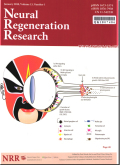摘要Rats have been the primary model to study the process and underlying mechanisms of recovery after spinal cord injury. Two weeks after a severe spinal cord contusion, rats can regain weight-bearing abilities without therapeutic interventions, as assessed by the Basso, Beattie and Bresnahan locomotor scale. However, many human patients suffer from permanent loss of motor function following spinal cord injury. While rats are the most understood animal model, major differences in sensorimotor pathways between quadrupeds and bipeds need to be considered. Understanding the major differences between the sensorimotor pathways of rats, non-human primates, and humans is a start to improving targets for treatments of human spinal cord injury. This review will discuss the neuroplasticity of the brain and spinal cord after spinal cord injury in rats, non-human primates, and humans. A brief overview of emerging interventions to induce plasticity in humans with spinal cord injury will also be discussed.
更多相关知识
- 浏览17
- 被引7
- 下载0


相似文献
- 中文期刊
- 外文期刊
- 学位论文
- 会议论文



 换一批
换一批 换一批
换一批



